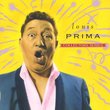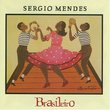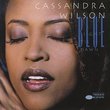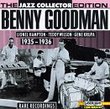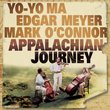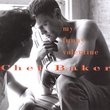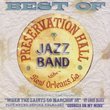| All Artists: George Gershwin, Frank Milne Title: Gershwin Plays Gershwin: The Piano Rolls Members Wishing: 0 Total Copies: 2 Label: Nonesuch Original Release Date: 11/9/1993 Release Date: 11/9/1993 Genres: Jazz, Pop, Soundtracks, Classical, Broadway & Vocalists Styles: Easy Listening, Oldies, Vocal Pop, Chamber Music, Forms & Genres, Theatrical, Incidental & Program Music, Historical Periods, Classical (c.1770-1830), Musicals, Traditional Vocal Pop Number of Discs: 1 SwapaCD Credits: 1 UPCs: 075597928723, 603497079360 |
Search - George Gershwin, Frank Milne :: Gershwin Plays Gershwin: The Piano Rolls
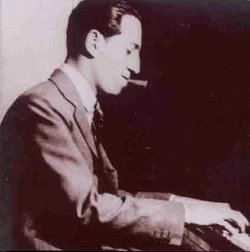 | George Gershwin, Frank Milne Gershwin Plays Gershwin: The Piano Rolls Genres: Jazz, Pop, Soundtracks, Classical, Broadway & Vocalists
![header=[] body=[This CD is available to be requested as disc only.]](/images/attributes/disc.png?v=15401716) ![header=[] body=[This CD is unavailable to be requested with the disc and back insert at this time.]](/images/attributes/greyed_disc_back.png?v=15401716) ![header=[] body=[This CD is unavailable to be requested with the disc and front insert at this time.]](/images/attributes/greyed_disc_front.png?v=15401716) ![header=[] body=[This CD is unavailable to be requested with the disc, front and back inserts at this time.]](/images/attributes/greyed_disc_front_back.png?v=15401716) |
Larger Image |
CD DetailsSimilarly Requested CDs
|
Member CD ReviewsReviewed on 1/22/2013... This is a treat to have and much better quality than I expected given that it was recorded on a piano roll. It's marvelous to have the piano solos recorded by George Gershwin himself. I have several recordings of Rhapsody in Blue, and now I know how he interpreted it himself. Dennis L. Dennis Loomis 1 of 1 member(s) found this review helpful.
CD ReviewsGershwin plays again through magic of piano rolls.... Alex Diaz-Granados | Miami, FL United States | 01/24/2004 (5 out of 5 stars) "Once upon a time in America, player pianos -- which were modified pianos with internal mechanisms that read "piano rolls" very much like computers today read, say, CD-ROM discs -- were "the" big thing in popular American music. I first saw one at the Miami Museum of Science many years ago, and I was enthralled by what (to a 12-year-old boy) was a pretty neat sight -- a piano that played by itself! At the time, Scott Joplin's "The Entertainer" rag was in vogue (The Sting had been a big hit movie at the time), and I stayed at that part of the museum, listening to the melody from a long-gone era and watching the keyboard move as if a ghost had decided the museum was too darned quiet and wanted to hear some happy tunes of the past.George Gershwin grew up in the early part of the 20th Century and thus had first-hand experience with player pianos, as the liner notes by Artis Woodhouse explain in "Gershwin Plays Gershwin," a 12-track collection of piano rolls arranged and performed by Gershwin, whose short life (he, like Wolfgang Amadeus Mozart, died before reaching his 40th year) nevertheless left behind a rich musical legacy for lovers of American pop, jazz, and even classical music with such works as "Rhapsody in Blue," "An American in Paris," "Porgy and Bess," "Girl Crazy," and "Someone to Watch Over Me.""Rhapsody in Blue" and "An American in Paris," which are normally performed by pianists accompanied by big orchestras, are perhaps the best known works to the general audience; they are often performed by symphony orchestras during "pops" concerts in the summer and, in the case of "Rhapsody in Blue," used in television commercials and movies. (To this day, I can't listen to "Rhapsody in Blue" without thinking of United Airlines' "Fly the friendly skies" ad campaign." Heard as piano pieces only, these two jazz-classical fusions still capture the essence of Gershwin's Jazz Age joy for life and, by extension, America's pre-Great Depression jauntiness, optimism, and even naivete. Other musical jewels include such songs as "Swanee" (made famous by Al Jolson), "When You Want 'Em, You Can't Get 'Em, When You Got 'Em, You Don't Want 'Em," "Sweet and Lowdown," "So Am I," "Kickin' The Clouds Away," and "On My Mind the Whole Night Long."And because Gershwin himself had to do much of the piano rolls' "programming" (Mr. Woodhouse explains it better in the liner notes), listening to "Gershwin Plays Gershwin" is like going back to the first decades of the last century and being at one of the composer/pianist's live performances." Beautiful, simply beautiful macktheknife | Northern, CA | 02/19/2002 (5 out of 5 stars) "I had purchased this CD in a used bin from my local record store more than six years ago. I had heard a brief news story on this CD from CNN, and I decided to take a chance on this ... bargain.Boy, did I ever make the right call. I knew almost next to nothing about George Gershwin, but the music on this CD was simply too magical. All the familiar melodies and song I had heard one time or another in my life (like the United Airlines commercial from "Rhapsody in Blue") jumped right from my boombox. You can feel Gershwin's energy and intensity in each and every one of these songs, and there were times that I would be swept away in excitement by the speed and emotions.I know I did a poor job in describing this CD, but I can guarantee you that if you like piano melodies, this CD should definitely belong in your collection. After all these years, it is still one of my favorites."
|

 Track Listings (12) - Disc #1
Track Listings (12) - Disc #1